9 Best Drought-Tolerant Plants for Utah Landscapes
BY ABDUL WADOOD | MAY 17TH, 2023 | LAWN CARE, UTAHWith only 13 inches of precipitation a year, Utah is the second driest state in the U.S. But that doesn’t mean you can’t enjoy a beautiful yard, provided you start with these nine drought-tolerant landscaping plants.
That doesn’t mean you can set them and forget them. All yards require some level of care, but you can cut down on your time, effort, and expense with plants that don’t require a lot of water to survive. Let’s take a look at some of the best drought-tolerant plants for Utah.
In this article:
Why Native Plants?
All plants listed here are native to Utah. But what are native plants? They are called “native” because they have been growing in a particular region for years and are well-adapted to that region’s climate and soil conditions.
Here are the advantages of native plants over non-natives.
- They attract many pollinators, such as butterflies, bees, and hummingbirds.
- They require little maintenance and can easily adapt to the climate and your lawn’s condition.
- They are more resistant to diseases and lawn pests.
- They can survive with little water.
Best Drought-Tolerant Plants for Utah
Shrubs
1. Apache Plume (Fallugia Paradoxa)
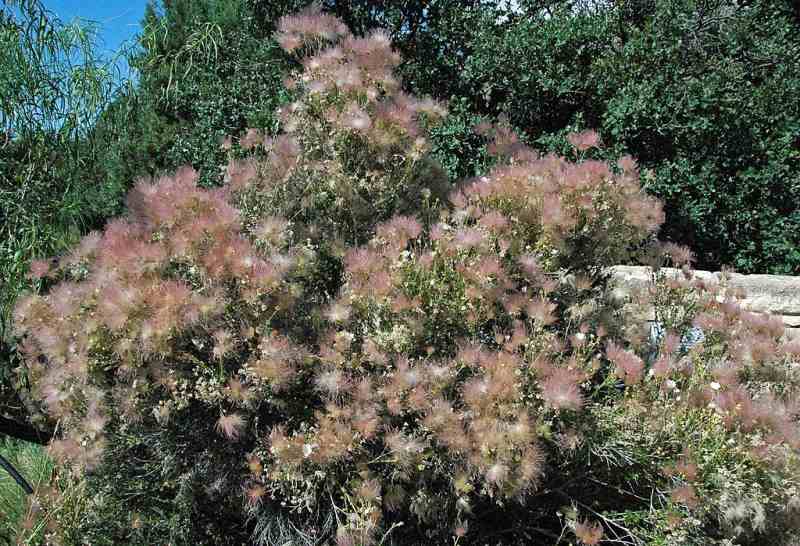
Photo Credit: James St. John / Wikimedia Commons / CC BY 2.0
Apache plume looks distinctive with white, five-petaled flowers and fluffy pink seed heads. It blooms from late spring to mid-fall and attracts bees and butterflies in full bloom. Water newly planted Apache plume at least once a week. Once established, you can water it once a month.
Apache plume grows best in soil with good drainage. It’s a low-maintenance shrub that can grow up to 8 feet. It can also resist deer.
Growth habit: Shrub
Mature size: Up to 8 feet tall and 6 feet wide
Duration: Perennial
Foliage: Dark green
Sunlight needs: Full sun
Soil preferences: Sandy, dry, well-drained soil
Water needs: Low
Potential hazards: Non-toxic
2. Rabbitbrush (Chrysothamnus)
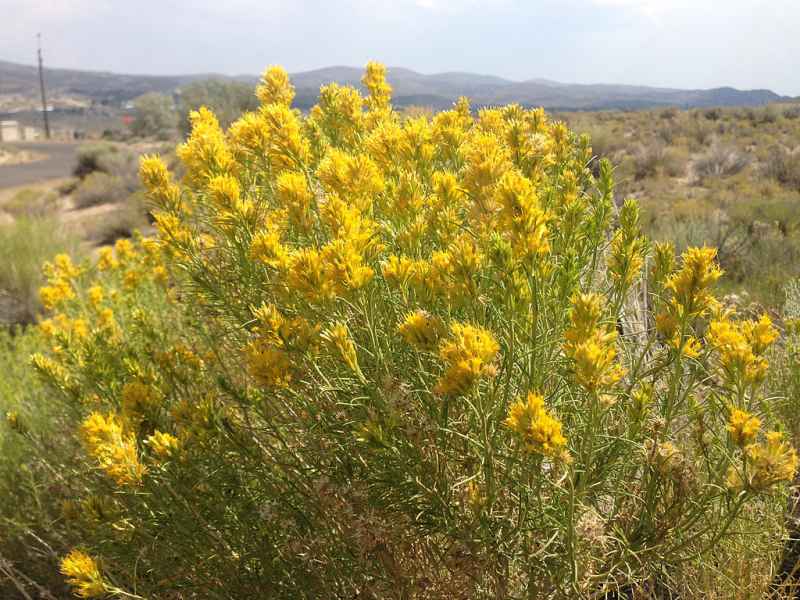
Photo Credit: Famartin / Wikimedia Commons / CC BY-SA 4.0
Rabbitbrush looks attractive with its fine-textured, gray-green foliage. It blooms from late summer to mid-fall, producing showy golden yellow flowers. Bees and butterflies love them. Once established, rabbitbrush requires little to no watering.
Rabbitbrush grows best in full sun and prefers sandy soil with good drainage. This shrub is toxic to humans and pets. So, if you have children and pets playing around in your yard, it’s best to avoid this shrub or plant it elsewhere, maybe on the exterior.
Growth habit: Shrub
Mature size: Up to 7 feet tall and just as wide
Duration: Perennial
Foliage: Gray-green
Sunlight needs: Full sun
Soil preferences: Sandy, well-drained soil
Water needs: Low
Potential hazards: Toxic to humans and pets
3. White Sage (Salvia Apiana)
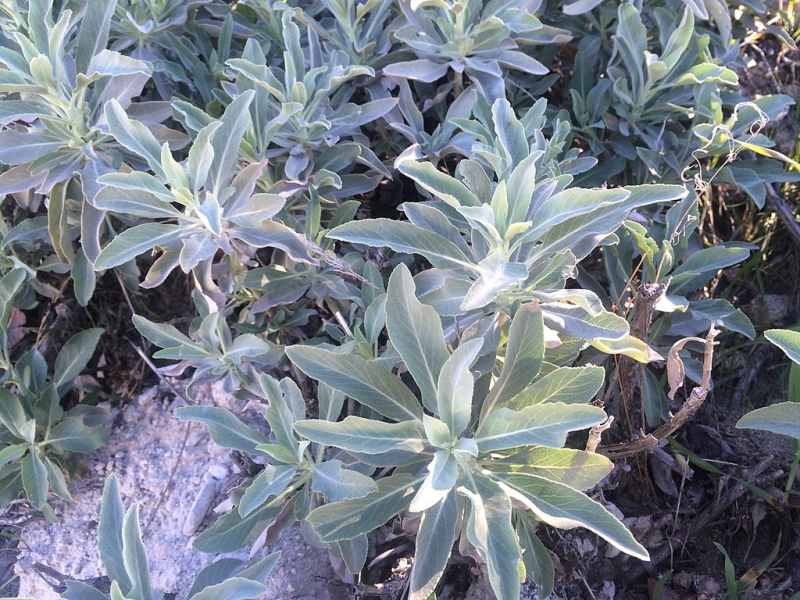
Photo Credit: HLWolfe / Wikimedia Commons / CC BY-SA 4.0
White sage grows best in full sun and prefers sandy soil with good drainage. It looks distinctive with clusters of white flowers. This shrub blooms from spring to summer and attracts carpenter bees. White sage has many medicinal benefits.
White sage features aromatic greenish silver leaves. This shrub grows up to 5 feet, but the floppy appearance of mature flower shoots makes it appear shorter than it actually is.
Growth habit: Shrub
Mature size: Up to 4 feet tall and 5 feet wide
Duration: Perennial
Foliage: Greenish silver
Sunlight needs: Full sun
Soil preferences: Sandy, loamy, well-drained soil
Water needs: Low
Potential hazards: Non-toxic
4. Turpentine Bush (Ericameria Laricifolia)
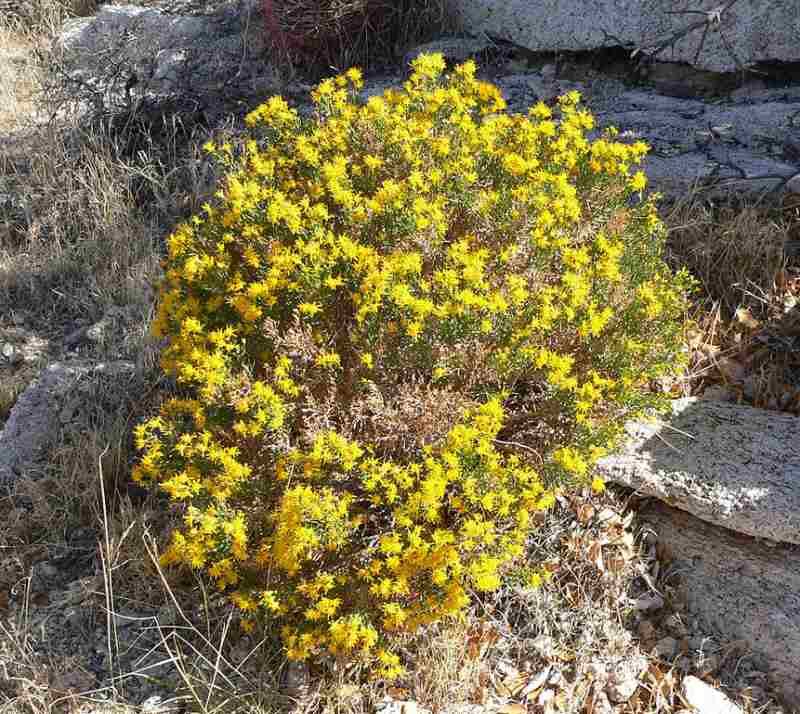
Photo Credit: Stan Shebs / Wikimedia Commons / CC BY-SA 3.0
Turpentine bush blooms from late summer to fall, producing bright yellow flowers. The sticky, needle-like leaves have a turpentine aroma. Turpentine bush grows best in full sun and can also handle partial shade.
The turpentine bush prefers well-drained soil and requires weekly watering when it is first planted. Once it’s established, however, don’t water the shrub more than once a month, as overwatering can reduce blooming.
Growth habit: Shrub
Mature size: Up to 3 feet tall and 5 feet wide
Duration: Perennial
Foliage: Green
Sunlight needs: Full sun to partial shade
Soil preferences: Sandy, dry, well-drained soil
Water needs: Low
Potential hazards: Toxic to humans and pets
Herbs
5. Desert Globemallow (Sphaeralcea Ambigua)
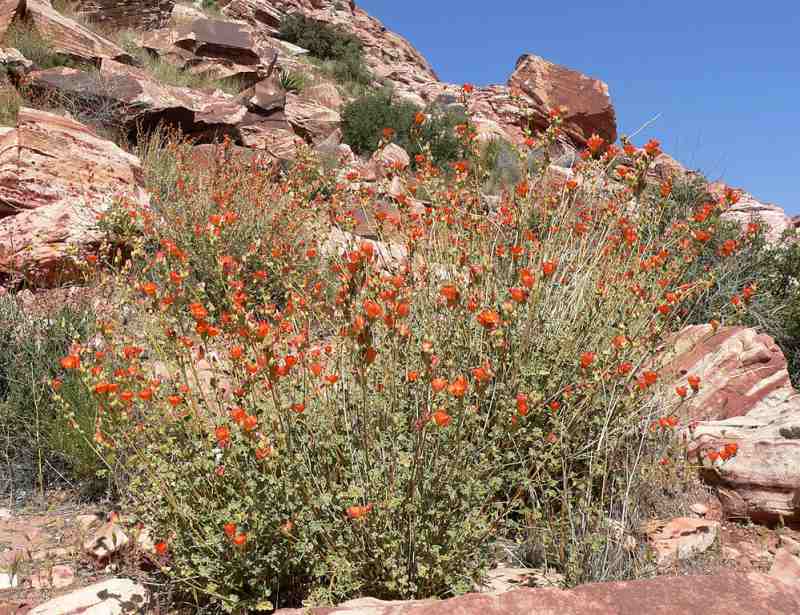
Photo Credit: Stan Shebs / Wikimedia Commons / CC BY-SA 3.0
Desert globemallow looks beautiful with five-petaled, reddish-orange flowers. It blooms throughout spring and attracts bees and butterflies in full bloom. Desert globemallow grows best in full sun and prefers sandy soil with good drainage.
Desert globemallow features gray-green leaves that are broad and have three lobes. Be careful when touching this plant, as the hair on the leaves can cause eye irritation.
Growth habit: Herb
Mature size: Up to 3 feet tall and just as wide
Duration: Perennial
Foliage: Gray-green
Sunlight needs: Full sun
Soil preferences: Sandy, dry, well-drained soil
Water needs: Low
Potential hazards: Non-toxic
6. Common Yarrow (Achillea Millefolium)
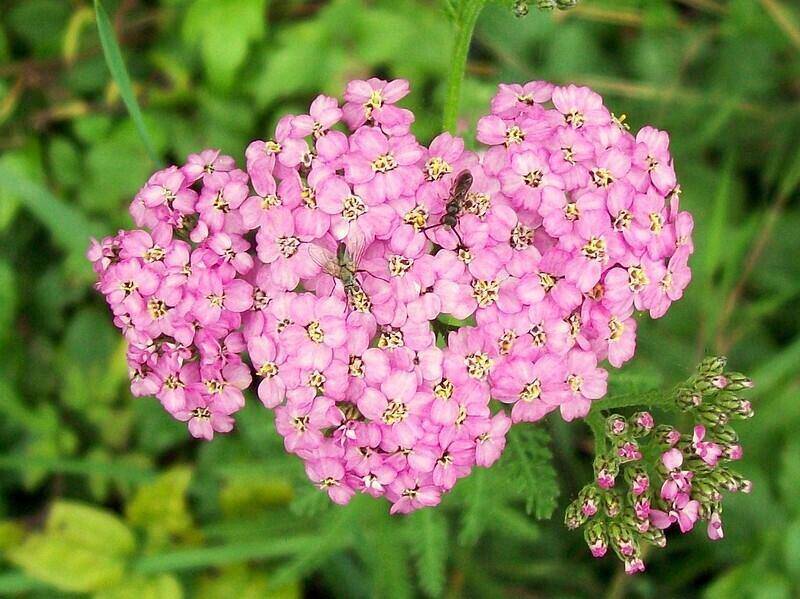
Photo Credit: Peter O’Connor aka anemoneprojectors / Flickr / CC BY-SA 2.0
Common yarrow looks beautiful with clusters of small white or yellow flowers. The leaves are aromatic and have a fine-textured, feathery appearance. Common yarrow blooms from mid-summer to early fall. Butterflies and bees love it.
Common yarrow grows best in full sun. It prefers sandy, loamy, or clay soil with good drainage. Common yarrow has many medicinal uses too.
Growth habit: Herb
Mature size: Up to 3 feet tall and just as wide
Duration: Perennial
Foliage: Green
Sunlight needs: Full sun
Soil preferences: Sandy, loamy, clay, well-drained
Water needs: Low
Potential hazards: Non-toxic to humans. Toxic to pets.
7. Fireweed (Chamaenerion Angustifolium)
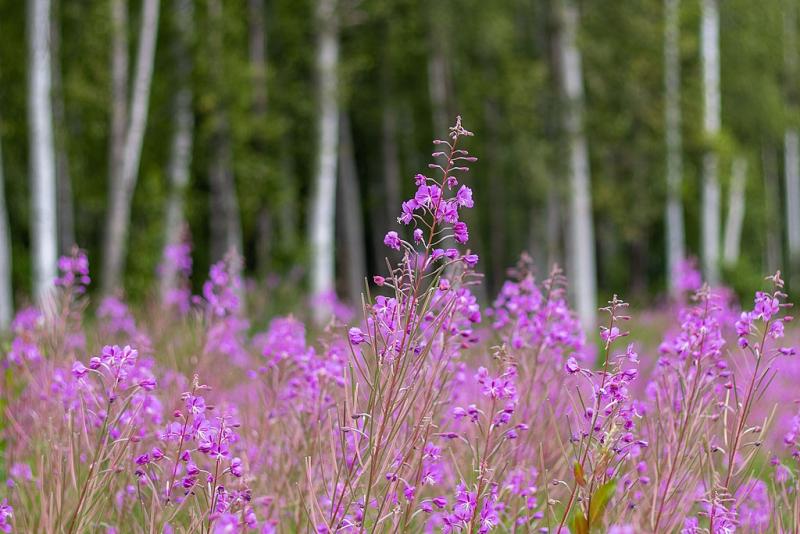
Photo Credit: Borealomas / Wikimedia Commons / CC BY-SA 4.0
Fireweed can be a gorgeous addition to your Utah yard. It features pinkish-purple colors and requires little to no watering once established. Plant fireweed in a place with abundant sunlight, as it needs 6 hours of direct sunlight a day.
Fireweed prefers sandy soil with good drainage. One note of caution: This herb is toxic to both humans and pets.
Growth habit: Herb
Mature size: Up to 5 feet tall and 2 feet wide
Duration: Perennial
Foliage: Dark green
Sunlight needs: Full sun
Soil preferences: Sandy, well-drained soil
Water needs: Low
Potential hazards: Toxic to humans and pets
8. Goldenrod (Solidago)
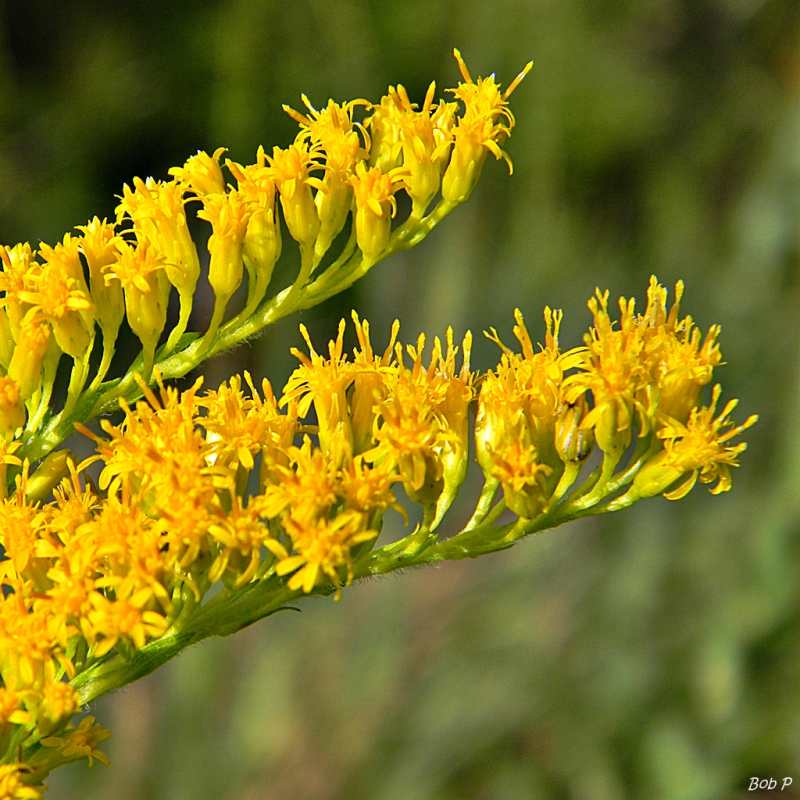
Photo Credit: Bob Peterson from North Palm Beach, Florida, Planet Earth! / Wikimedia Commons / CC BY-SA 2.0
Goldenrod grows best in full sun and can withstand partial shade. It grows in sandy, rocky, and clay soils with good drainage. The leaves are smooth with slightly jagged edges.
Goldenrod blooms from summer to fall, producing clusters of bright yellow flowers that bees and butterflies love. Remove the dried flowers to keep goldenrod in bloom for much longer. Once the blooming period ends, goldenrod will look like an ordinary plant with medium-green foliage.
Growth habit: Herb
Mature size: Up to 5 feet tall and 3 feet wide
Duration: Perennial
Foliage: Green
Sunlight needs: Full sun to partial shade
Soil preferences: Sandy, rocky, clay, well-drained soil
Water needs: Low
Potential hazards: Toxic to humans and pets
Tree
9. Eastern Cottonwood (Populus Deltoides)
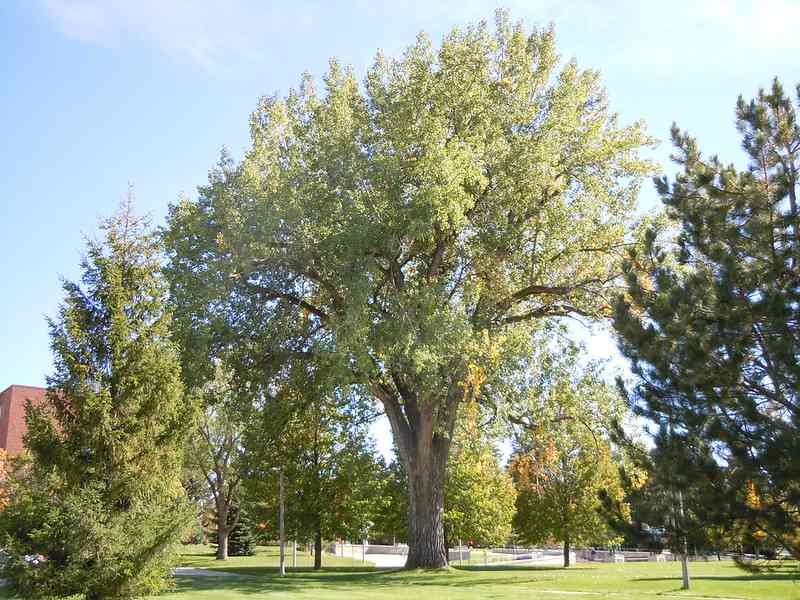
Photo Credit: Matt Lavin / Flickr / CC BY-SA 2.0
Eastern cottonwood is a large, fast-growing tree that produces beautiful flowers during early spring. It grows best in full sun and prefers well-drained soil. This tree can live up to 100 years.
Eastern cottonwood has weak wood and penetrating roots. If you live in a windy area, it’s best to avoid this large tree as it’s prone to uproot.
Growth habit: Tree
Mature size: Up to 100 feet tall and 70 feet wide
Duration: Perennial
Foliage: Green
Sunlight needs: Full sun
Soil preferences: Sandy, well-drained soil
Water needs: Low
Potential hazards: Non-toxic
The Final Word
Utah has a warm, desert climate. In fact, it’s one of the driest states in the country. All plants listed here are native to Utah and can easily withstand drought.
Analyze your lawn’s soil condition and sun exposure and choose a plant that best suits your lifestyle. Also, don’t forget to consider a plant’s toxicity levels, especially if you have kids and pets playing in your yard.
A lush, green, and healthy lawn requires proper maintenance. If you don’t want to spend your weekend doing lawn chores, Wikilawn Utah lawn care pros can help. We can assist you with everything related to lawn care.
Main Photo Credit: Red Butte Garden / Andrey Zharkikh / Flickr / CC BY 2.0